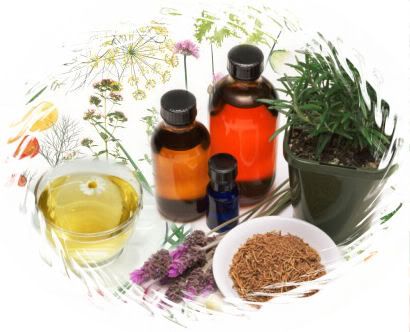


Internal Treatments
Decoction: Decoctions are a good way to breach the outer coating of plants and dissolve the active chemicals in water... To prepare a decoction, you will need water, brought to a boil - add to that 1 tablespoon of fresh plant per 1 cup of water used... Do not cook for longer than 3 minutes, as excessive boiling will damage the medicinal value of the plant... Plants so prepared can be eaten in small mouthfuls or used in a compress...
Infusion: An infusion is a fancy way of saying "hot tea" - and yet so many people do not know how to make a proper cup of tea... To prepare an infusion, use 1 teaspoon of dried plant per 1 cup of water used... The water should be simmering, not boiling... Infuse (let soak) for 5 minutes, in an earthenware, terracotta, or porcelain pot - before straining and serving... Infusions should be taken on an empty stomach for best results, as they are absorbed more quickly into the bloodstream this way... Never sweeten with white sugar, as it interferes with the virtues of the plant - a better alternative is raw honey in small amounts, added when the infusion has cooled somewhat...
Tincture: Tinctures are the most complex of ingestion methods, but are the best way to preserve an herbal medicine the longest amount of time... To prepare a tincture, shred the plant parts finely and blend with twice that amount of spirits (type of spirits may be to taste, but it should be 60% - 80% alcohol)... Pour the mixture into a tightly sealed glass jar and store for 1 month in a dark, dry place... Shake jar vigorously every 3 days... At the end of the month, strain the mixture through a cheesecloth or coffee filter, squeezing so as to retain as much of the concentrated liquid as possible... Alcohol-based tinctures last for up to 5 years, but always check your tinctures by sight and smell before ingesting - if it no longer looks or smells as it did, dispose of it and make a new batch...
External Treatments
Herbal Bath: All of the above internal treatments (decoctions, infusions, tinctures) can be used as an external treatment as well - one cup of these added to a standard size bathtub of warm water allows the mixture to be absorbed through the skin... For a larger bathtub, two cups of the mixture may be required...
Poultice: To prepare a poultice you need either fresh plant, crushed or dried plant, powdered, or a prepared tincture... This is applied directed to the skin to promote healing, scarring, or to solve a skin problem... Poultices may be used hot or cold... To heat fresh plant poultices, add a little boiled water to wet crushed plants... To heat a dry powder poultice, mix with boiled water to make a hot paste... To heat a tincture poultice, warm gently over a low heat... Cold fresh plant poultices require only the addition of a little cold water to wet, and dry powder poultices are made into a cold paste...
Compress: To prepare a compress you need an infusion of the plant or decoction - soak a piece of sterile cotton in an infusion, or, in the case of a decoction, soak and add a small amount of the decocted plant - then apply to the skin...
Medicinal Oil and Beeswax Salve: These oils are used to create beeswax salves - they are cooked together in a double boiler: 1 ¼ T. wax to 5 T. oil... To prepare medicinal oil, shred the plant parts finely and blend with twice that amount of organic, cold-pressed olive oil... Pour the mixture into a tightly sealed glass jar and store for at least 1 month in a dark, dry place and strained thereafter for use... Medicinal oils should be discarded after 9 months and should never be used if they begin to look or smell unwholesome...
Ointment: To prepare an ointment you need lanolin... The fresh or dried plants are placed in the lanolin and allowed to simmer a long time at low heat (measurements and temperature vary depending on recipe)... To save time, sometimes essential oils are used rather than the fresh/dried plant...
Other Applications Of Medicinal Plants
Inhalation: Inhale the steam of a decoction - such as one meant for nasal decongestion... Inhale the smoke of a plant burned on a coal fire in a metal container - such as chamomile or mint to combat asthma...
Pouches: The aromas of certain plants can also be soothing - such as pouches of dried lavender placed inside a pillowcase to promote restful sleep...
Leave A Flower / View The Bouquet